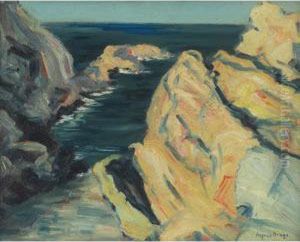Alfred Praga Paintings
Alfred Praga was a British artist born in 1867, whose career spanned the late 19th and early 20th centuries, a period rich in artistic evolution. He was not only a painter but also an accomplished etcher and watercolourist, showcasing a diverse range of skills across different mediums. Praga's work, characterized by its detail, color, and realism, reflects the broader trends of his time, including the influence of Impressionism and the later movements that ushered in modern art.
Educated at the Royal College of Art, Praga was part of a vibrant community of artists in Britain, contributing to the artistic dialogues that shaped the era's visual culture. His subjects varied widely, including portraits, landscapes, and genre scenes, demonstrating his versatile ability to capture both the essence of a person and the spirit of a place. Praga's portraits, in particular, are noted for their depth and insight into the character of his subjects, earning him commissions and recognition in artistic circles.
Throughout his career, Alfred Praga participated in numerous exhibitions, showcasing his work alongside his contemporaries. His contributions to the art world were recognized by his peers, and he was involved in various artistic societies, which played a crucial role in the development and promotion of art during his time. Despite the changing art trends, Praga maintained a consistent quality and dedication to his craft, adapting his style to stay relevant in the rapidly evolving artistic landscape.
Praga's legacy, though perhaps not as widely known as some of his contemporaries, remains significant. His works are held in various collections and continue to be appreciated for their beauty, technique, and historical value. Alfred Praga died in 1949, leaving behind a body of work that encapsulates the richness of British art at the turn of the century. His life and art offer a window into a transformative period in art history, reflecting the shifts in aesthetics, technique, and the very function of art in society during his lifetime.
